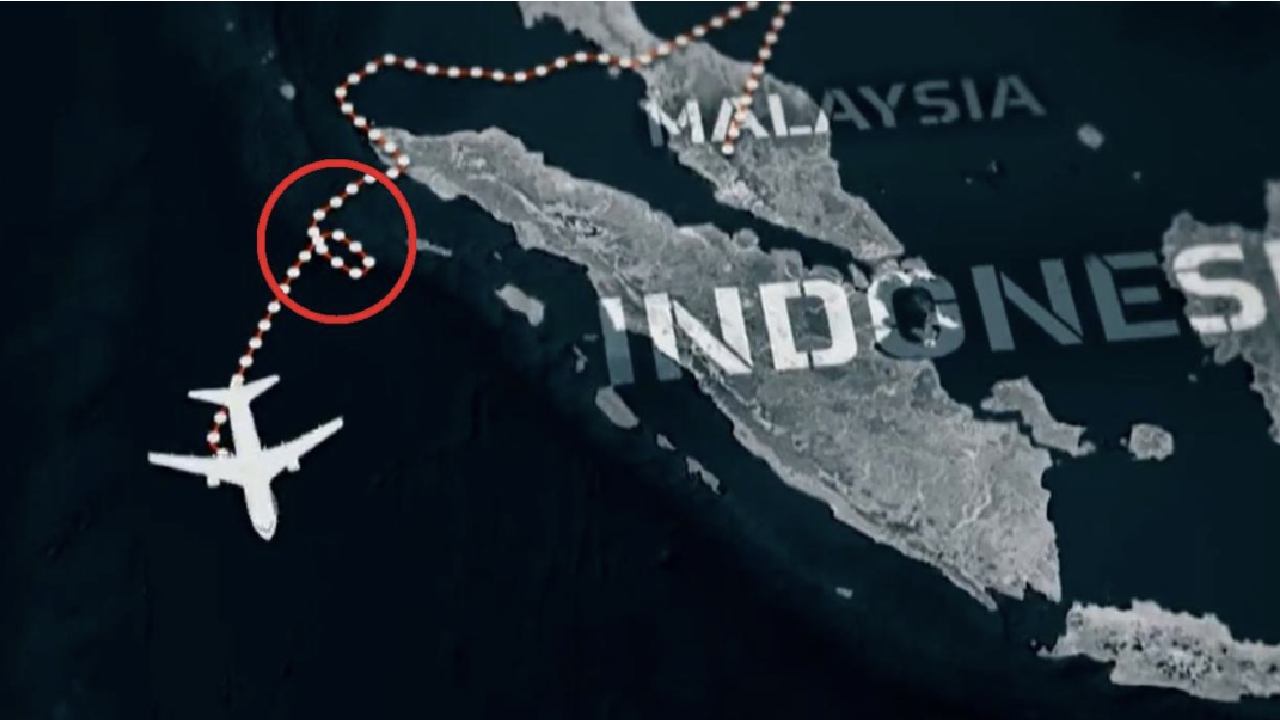Aviation expert's new theory on missing flight MH370

A noted aviation expert has said he has found the likely location of flight MH370.
If he’s right it would solve the eight-year-old mystery of the whereabouts of the aircraft and its 239 passengers and crew, all of whom are presumed to have died.
The findings have also reinforced a “horrifying” theory according to the senior officer in charge of the initial search of the missing plane’s final hours.
Authorities are yet to be persuaded to tackle a new search mission.
Malaysia Airlines flight MH370 disappeared on March the 8th, 2014 several hours after leaving Kuala Lumpur, Malaysia’s capital, bound for Beijing, China.
The plane headed north-east towards China but not long after take off it abruptly changed direction in the Gulf of Thailand and headed back across the Malaysian peninsula. It then plotted a course south-west into the remote depths of the Indian Ocean.
It’s thought to have crashed 2000 kilometres off the coast of Western Australia, the search for MH370 has covered 120,000 square kilometres.
British aerospace engineer Richard Godfrey has conducted an examination of the anomalies in radio signals from that fateful night. He has said that’s enabled him to zero in on a new crash zone.
“In my view there’s no reason why we shouldn’t be planning for a new search,” Mr Godfrey told Channel 9’s 60 Minutes on Sunday.
The breakthrough discovery claim came after an analysis using Weak Signal Propagation Reporter (WSPR) technology – this is effectively an invisible radio wave similar to trip-wires that record anything disturbing or passing through the waves.
However, experts have expressed serious doubts as to whether historical WSPR data can be used to track MH370.
Mr Godfrey said 160 signals were disturbed over the Indian Ocean that night, disturbances likely caused by an aeroplane.
Only one other aircraft was anywhere near MH370 over the ocean and Mr Godfrey said that plane was at least an hour away.
That meant the disturbances were most likely caused by the Malaysian jet allowing its flight to be tracked as well as its probable final resting place.
He has said he can narrow a search area down to just 300 square kilometres which could be looked at in just a few weeks. That includes some areas already searched and others that were never looked at during the initial rescue effort.
“With this very difficult terrain it is possible to miss wreckage,” he said.
“When you’re going through 120,000 square kilometres you get one chance, one pass of each point. With 300 square kilometres you can have several passes and from different angles, so it’s possible.”
Findings put focus on pilot
Mr Godfrey told 60 Minutes that his research has uncovered another aspect to the flight and its captain Zaharie Ahmad Shah.
Far from heading in a straight line into the Indian Ocean, Mr Godfrey has claimed MH370 did a number of 360 degree turns over the sea – almost like holding patterns before an aircraft lands at a busy airport. That would mean the “ghost flight” theory – that the plane was on autopilot and the passengers and crew were incapacitated may not be accurate.
“This is strange to me. When you’re in the remotest part of the Indian Ocean trying to lose an aircraft why would you enter a holding pattern for 20 minutes?
“The captain may have been communicating with the Malaysian government, he may have been checking whether he was being followed, he may have simply wanted time to make up his mind,” said Mr Godfrey.
If correct, the curious course of the Boeing 777 over the Indian Ocean gives credence to the theory that the captain deliberately flew the plane into oblivion.
Peter Foley was the Australian Transport Safety Bureau’s (ATSB) director of operations for the MH370 search.
Asked on the program by 60 Minutes’ reporter Sarah Abo if the most likely scenario was that the captain was behind a mass murder incident, Mr Foley said “Yes, by a wide margin. It’s horrifying”.
But nonetheless, Mr Foley said some of Mr Godfrey’s conclusions needed more scrutiny.
“There’s certainly merit in exploring new avenues.
The ATSB described Mr Godfrey as “credible” but has not launched a new investigation.
“The Australian Transport Safety Bureau has not had a formal involvement in any search for the missing aircraft MH370 since the conclusion of the first underwater search in 2017, has not recommenced a search for the aircraft, and notes that any decision to conduct further searches would be a matter for the Government of Malaysia,” ATSB Chief Commissioner Angus Mitchell said in a statement.
“The ATSB does acknowledge that Mr Godfrey’s work recommends a search zone for MH370, a significant portion of which covers an area searched during the ATSB-led underwater search.
“When the ATSB was made aware that Mr Godfrey’s zone incorporates an area of ocean surveyed during the ATSB-led search, out of due diligence the ATSB requested Geoscience Australia review the data it held from the search to re-validate that no items of interest were detected in that area.”
“The ATSB expects that review to be finalised in coming weeks, the results from which will be made public on the ATSB’s website.
“The ATSB remains an interested observer in all efforts to find the missing aircraft.”
Mr Mitchell reiterated that any decision to conduct further searches for MH370 would be a matter for the Government of Malaysia.
Image: news.com.au
